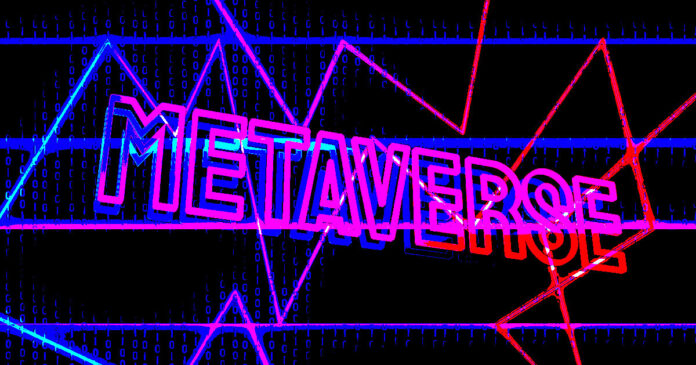The following is a guest post from Olivier Acuna.
Two leading tech firms co-authored an Industrial IoT Consortium (IIC) article introducing the machine economy, a new IoT digital transformation frontier that, according to PwC, will contribute to 70% of the global Gross Domestic Product (GDP) in the next seven years.
In a convergence of artificial intelligence and blockchain technology, the machine economy could contribute up to $15 trillion to the global economy by 2030, a PwC report said.
The Research conducted by IoTeX and Siemens explores why IoT and distributed ledger technology (DLT), such as blockchain, will enable machine economy growth and unlock new opportunities for IoT manufacturers and end-users.
The report also describes some of the disruptive business models that the industry is witnessing and highlights implementation examples. It quotes a Next Big Thing AG study that defines the machine economy as a network of smart, connected, and economically independent devices and machines acting as autonomous market participants, executing economic transactions and other activities with little to no human intervention.
This definition illustrates the disruption factors the machine economy brings to the Internet of Things, according to Fan, Baudry, and Sing.
“On the one hand, the machine economy addresses the traditional manufacturing and business processes in most enterprises and industries. On the other hand, it leverages technologies that enable autonomous transactions between devices or machines,” they said.
Industrial Metaverse
Among the four essential machine economy use cases the authors mention within the IIC article is the Industrial Metaverse, a hot topic that attendees at the Davos World Economic Forum (WEF) 2023 also happen to be discussing.
“Industrial Metaverse is an emerging trend that targets combining immersiveness, real-time data and digital twins to create new business models and accelerate digitalization,” wrote IoTeX’s Dr. Xinxin Fan and Siemens co-authors Steven Baudry and Sourabh Narayan Sing.
The metaverse showed remarkable growth in 2022 despite the global economic slowdown and experts believe it will continue to grow significantly. Deloitte believes the global Metaverse market size could swell to between $1.5 trillion and $13 trillion.
The WEF predicts the metaverse market will grow to $800 billion in 2024. McKinsey says,
“With its potential to generate up to $5 trillion in value by 2030, the metaverse is too big for companies to ignore.”
However, while traditional businesses and Web3 visionaries agree that the metaverse will continue to grow exponentially in the next few years, a VentureBeat article quotes ABiResearch saying, “there may be far more money to be made in the industrial metaverse.”
And in fact, it estimates that Industrial Metaverse will outgrow consumer and enterprise metaverse sectors by at least three-fold.
“Even as technologists are trying to envision what the metaverse will bring for businesses and consumers, the industrial metaverse is already transforming how people design, manufacture, and interact with physical entities across industries,” states an MIT Technology Review article.
One of the industrial metaverse’s critical applications is digital twins, a virtual replica of a product or process used to predict how the physical entity will perform throughout its lifecycle, as defined in MIT’s article. “The increasing buzz surrounding digital twins is fueling expectations for the industrial metaverse,” the MIT report says.
“BMW, for instance, created a virtual twin of its production plant in Bavaria before building the physical facility. Boeing is using a digital twin development model to design its airplanes. And “Virtual Singapore” is a digital representation of the Southeast Asian nation that the government created to support its policy decisions and test new technologies,” points out the MIT review.
However, challenges remain, said Dr. Fan, Baudry and Singh:
“One of the puzzle pieces of Industrial Metaverse will be connecting the edge devices and trusted data flow with the digital twins to create near real-time simulation and prediction for real-world situations,” they indicated.
“Enabling edge devices to directly participate in the incentivization mechanism would create further autonomy and highly efficient digitalization use cases.”
Over the past few years, the convergence of artificial intelligence, blockchain, cloud computing, edge computing, Internet of Things (IoT), 5G, computer vision and augmented/virtual reality have supported the creation of even more complex Digital Twins, they wrote.
While every progress in these technologies is pushing the digital twins closer to their real-world counterparts, these are also driving the industry through the next wave of the digital revolution, the IIC article said.
The introduction of blockchain and Web3, i.e., the third iteration of the internet, provides new perspectives and growth opportunities for IoT businesses by realizing the so-called machine economy.
Guest post by Olivier Acuna from
More about Olivier Acuna
Credit: Source link






















 Bitcoin
Bitcoin  Ethereum
Ethereum  Tether
Tether  Solana
Solana  XRP
XRP  Dogecoin
Dogecoin  USDC
USDC  Lido Staked Ether
Lido Staked Ether  Cardano
Cardano  TRON
TRON  Shiba Inu
Shiba Inu  Avalanche
Avalanche  Wrapped Bitcoin
Wrapped Bitcoin  Wrapped stETH
Wrapped stETH  Toncoin
Toncoin  Sui
Sui  Bitcoin Cash
Bitcoin Cash  WETH
WETH  Chainlink
Chainlink  Pepe
Pepe  Polkadot
Polkadot  LEO Token
LEO Token  Stellar
Stellar  NEAR Protocol
NEAR Protocol  Litecoin
Litecoin  Aptos
Aptos  Wrapped eETH
Wrapped eETH  Uniswap
Uniswap  USDS
USDS  Cronos
Cronos  Hedera
Hedera  Internet Computer
Internet Computer  Ethereum Classic
Ethereum Classic  Render
Render  Bonk
Bonk  Ethena USDe
Ethena USDe  Bittensor
Bittensor  WhiteBIT Coin
WhiteBIT Coin  POL (ex-MATIC)
POL (ex-MATIC)  Dai
Dai  Artificial Superintelligence Alliance
Artificial Superintelligence Alliance  dogwifhat
dogwifhat  Arbitrum
Arbitrum  MANTRA
MANTRA  Monero
Monero  Stacks
Stacks  OKB
OKB  Filecoin
Filecoin 
